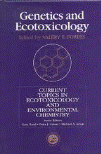Papers in the Biological Sciences

Valery Forbes Publications
Document Type
Article
Date of this Version
3-2000
Abstract
The successful persistence of Capitella spp. in disturbed and/or oil-polluted habitats is widely known, but demographic adaptations might be only part of the explanation and little is known about differences among species. The present study investigates ecophysiological effects of the common PAH (polycyclic aromatic hydrocarbon) fluoranthene (FLU) on juvenile and adult survival, comparing 3 sibling species of Capitella (Polychaeta; Capitellidae). Subsequently, the influence of FLU on the aerobic and anaerobic metabolism in the most 'sensitive' species, Capitella sp. S, and most 'tolerant' species, Capitella sp. I, was assessed. Oxygen uptake and internal succinate concentration (an indicator of anaerobic metabolism) were measured after short-term (7 h) and long-term (2 wk) FLU pre-exposure (100 μg g–1). FLU exposure reduced mean survival times of juveniles (4 d old) of all sibling species, but tolerance varied among the 3 species of Capitella adults. Capitella sp. S, originally collected from 'clean' oxygen-rich North Sea intertidal sediments, was most sensitive and Capitella sp. M, and Capitella sp. I, which is the most opportunistic of the sibling species described to date, were most tolerant. In Capitella sp. S, O2 uptake decreased at lower ambient oxygen levels and increasing FLU concentrations increased oxygen consumption. Similarly, O2 uptake decreased at lower ambient oxygen levels in Capitella sp. I; however, FLU concentrations had no effect on oxygen uptake. For both species, anaerobic metabolism increased with declining ambient oxygen levels, and was influenced by FLU exposure in Capitella sp. S, but not in Capitella sp. I. Part of the explanation for the success of Capitella sp. I in oil-polluted habitats may be that this species is able to channel energy into vital processes without a measurable increase in energy expenditure. We conclude that these 3 Capitella species are ecophysiologically diverse in their responses to toxicant exposure. Our results suggest that toxicant tolerance differences among sibling species have a genetic basis and that increased aerobic and anaerobic metabolic rates in response to toxicant exposure can have negative survival consequences. This has to be considered when using these species as pollution indicators or to improve sediment quality.


Comments
Published in MARINE ECOLOGY PROGRESS SERIES, Vol. 194: 169-177, 2000. Copyright 2000 Inter-Research. Used by permission.